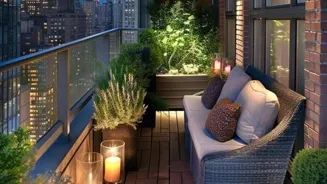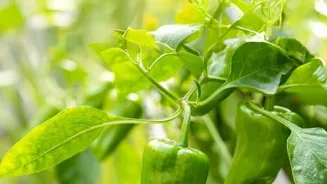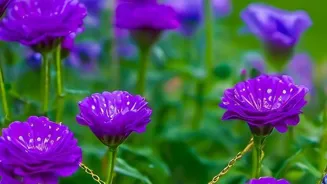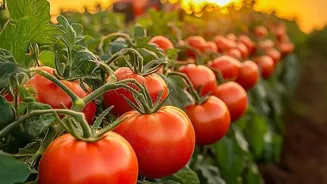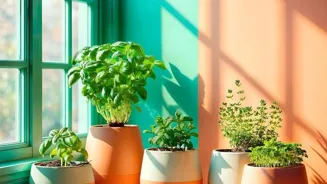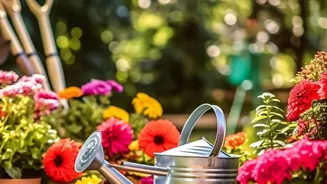Discover the joy of terrace gardening! Grow your urban oasis step by step. Read on for a lush green journey!
In the bustling Indian metros, where space comes at a premium, many are turning to a green solution:
terrace gardening! It's not just a hobby; it's a way to connect with nature, grow your own fresh produce, and beautify your surroundings.
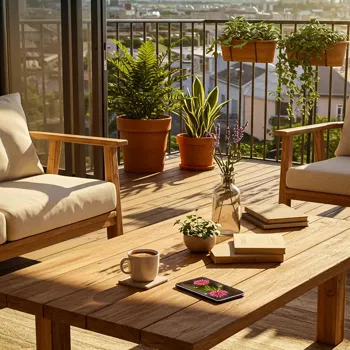
Imagine stepping out onto your terrace and being greeted by lush greenery, vibrant flowers, and the aroma of herbs. Sounds divine, doesn't it? Well, with a little planning and effort, you can transform your barren terrace into a thriving urban oasis. Here's a simple, 10-step guide to get you started on your terrace gardening journey:
Assess sunlight and structure before starting a terrace garden
Before you rush out to buy plants and pots, take a good look at your terrace. How much sunlight does it get? Is it morning sun, afternoon sun, or shaded? Different plants have different sunlight requirements. Some thrive in full sun (6-8 hours), while others prefer partial shade (3-6 hours).
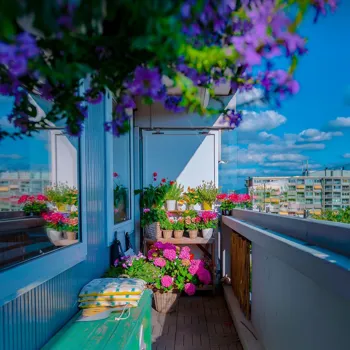
Observe the sun's path throughout the day to determine which areas of your terrace are best suited for specific plants. Also, check the structural strength of your terrace to ensure it can bear the weight of the soil, pots, and plants. If you have any doubts, consult a structural engineer.
This initial assessment is crucial for the success of your terrace garden so spend time understanding your site!
Ensure terrace waterproofing to prevent water damage in gardens
Water damage is a major concern for terrace gardens. Before you start placing pots and containers, ensure that your terrace is properly waterproofed. Even small leaks can cause significant damage to the structure of your building over time.
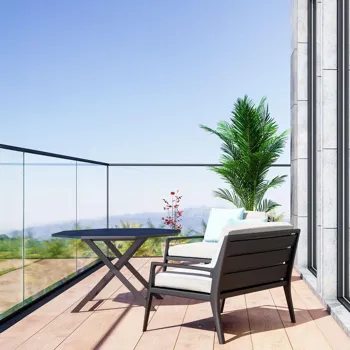
Consider applying a waterproofing membrane or coating to the surface of your terrace. This will protect your terrace from water seepage and prevent any structural issues. Additionally, install a proper drainage system to ensure that excess water can drain away easily.
Standing water can lead to root rot and attract mosquitoes. A well-waterproofed terrace with good drainage is the foundation of a healthy and long-lasting garden. Get professional help if you think you need it.
Select right containers for terrace garden; size, material, drainage crucial. Size depends on plants. Terracotta porous, plastic retains moisture. Drainage holes essential. Use grow bags
Selecting the right containers is vital for your terrace garden. Consider factors such as size, material, and drainage. The size of the container will depend on the type of plants you want to grow.
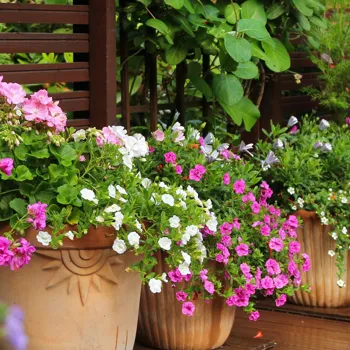
For example, herbs and small flowering plants can be grown in smaller pots, while vegetables and fruit trees will require larger containers. Terracotta pots are a popular choice as they are porous and allow for good air circulation.
Plastic pots are lightweight and durable, but they can retain more moisture. Ensure that all your containers have drainage holes at the bottom to prevent waterlogging. You can also use grow bags, which are lightweight and easy to move around.
It doesn't matter containers you choose, the important thing is to plant properly.
Use well-draining potting mix in containers for healthy plants
The soil is the lifeblood of your garden! Using regular garden soil in containers can be problematic as it tends to become compacted and doesn't drain well. Instead, opt for a well-draining potting mix specifically designed for containers.
A good potting mix should contain a combination of cocopeat, vermicompost, and garden soil. Cocopeat helps retain moisture, vermicompost provides nutrients, and garden soil provides structure. You can also add perlite to improve drainage and aeration.
Avoid using heavy clay soil, as it can suffocate the roots of your plants. You can buy pre made potting mix, or you can prepare your own mix to get cheaper costs.
Select plants suited to your climate & sunlight for terrace gardening
Now comes the fun part: selecting the plants for your terrace garden! Consider your local climate and the amount of sunlight your terrace receives. Choose plants that are well-suited to these conditions.
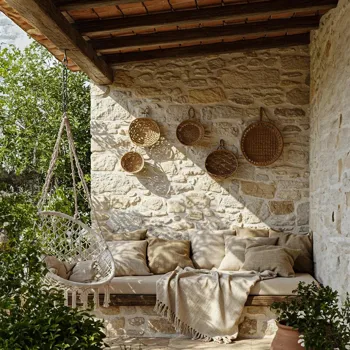
Some popular choices for terrace gardens in India include tomatoes, chillies, eggplants, spinach, and herbs like basil, mint, and coriander. Flowering plants like marigolds, petunias, and hibiscus can add a splash of color to your garden.
If you have limited space, consider growing plants vertically using trellises or hanging baskets. This will maximize your growing area and add visual appeal to your terrace. Remember to start small and gradually expand your garden as you gain experience.
Planting tips: Prepare soil, remove plants gently, water thoroughly, check for pests
Once you have your containers, soil mix, and plants ready, it's time to get your hands dirty! Gently remove the plants from their nursery pots and loosen the roots slightly. Dig a hole in the potting mix that is large enough to accommodate the root ball of the plant.
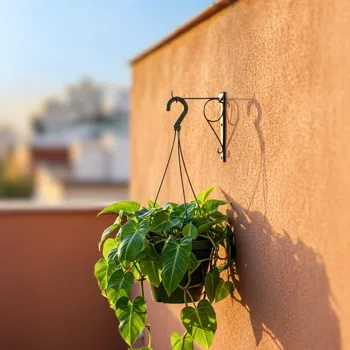
Place the plant in the hole and fill it back in with potting mix, gently firming the soil around the base of the plant. Water thoroughly after planting. Be careful not to overwater. Make sure to check your plants for pests. You can use neem oil to manage pests.
Proper watering and fertilization key for plant health
Proper watering and fertilization are essential for the health and growth of your plants. Water your plants regularly, especially during hot and dry weather. The frequency of watering will depend on the type of plant, the weather conditions, and the type of soil mix you are using.
Avoid overwatering, as it can lead to root rot. Fertilize your plants regularly with organic fertilizers such as compost tea or vermicompost. This will provide them with the nutrients they need to thrive. You can also use chemical fertilizers, but be sure to follow the instructions carefully.
Prune, weed, support: essential steps for a thriving terrace garden
Regular pruning and maintenance are necessary to keep your terrace garden looking its best. Remove dead or diseased leaves and branches regularly. Prune your plants to encourage bushier growth and to improve air circulation. Support climbing plants with trellises or stakes.
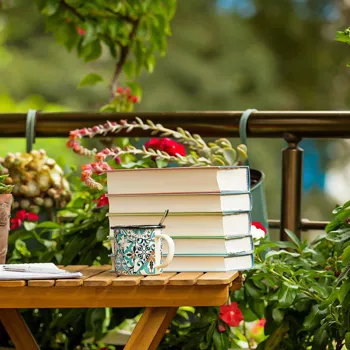
Regularly weed your garden to prevent weeds from competing with your plants for nutrients and water. Check your plants regularly for pests and diseases, and take action promptly to prevent them from spreading.
Terrace garden care: inspect, act promptly to prevent pests & diseases with organic methods
Pests and diseases can be a major problem in terrace gardens. Regularly inspect your plants for signs of infestation or disease. If you spot any problems, take action immediately. Use organic pest control methods such as neem oil or insecticidal soap to control pests.
For diseases, remove affected leaves and branches and treat the plant with a fungicide. Prevention is always better than cure, so keep your garden clean and well-maintained to minimize the risk of pests and diseases.
Embrace the rewards of terrace gardening and share the joy
The final and most important step is to enjoy the fruits (and vegetables!) of your labor. Terrace gardening is a rewarding hobby that provides you with fresh produce, beautiful flowers, and a connection to nature. Spend time in your garden, relax, and enjoy the peace and tranquility it offers.
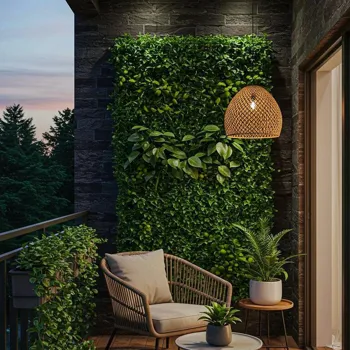
Share your harvest with friends and family, and inspire others to start their own terrace gardens. With a little effort and dedication, you can transform your terrace into a thriving urban paradise and enjoy the many benefits of gardening.
AI Generated Content. Glance/InMobi shall have no liability for the content